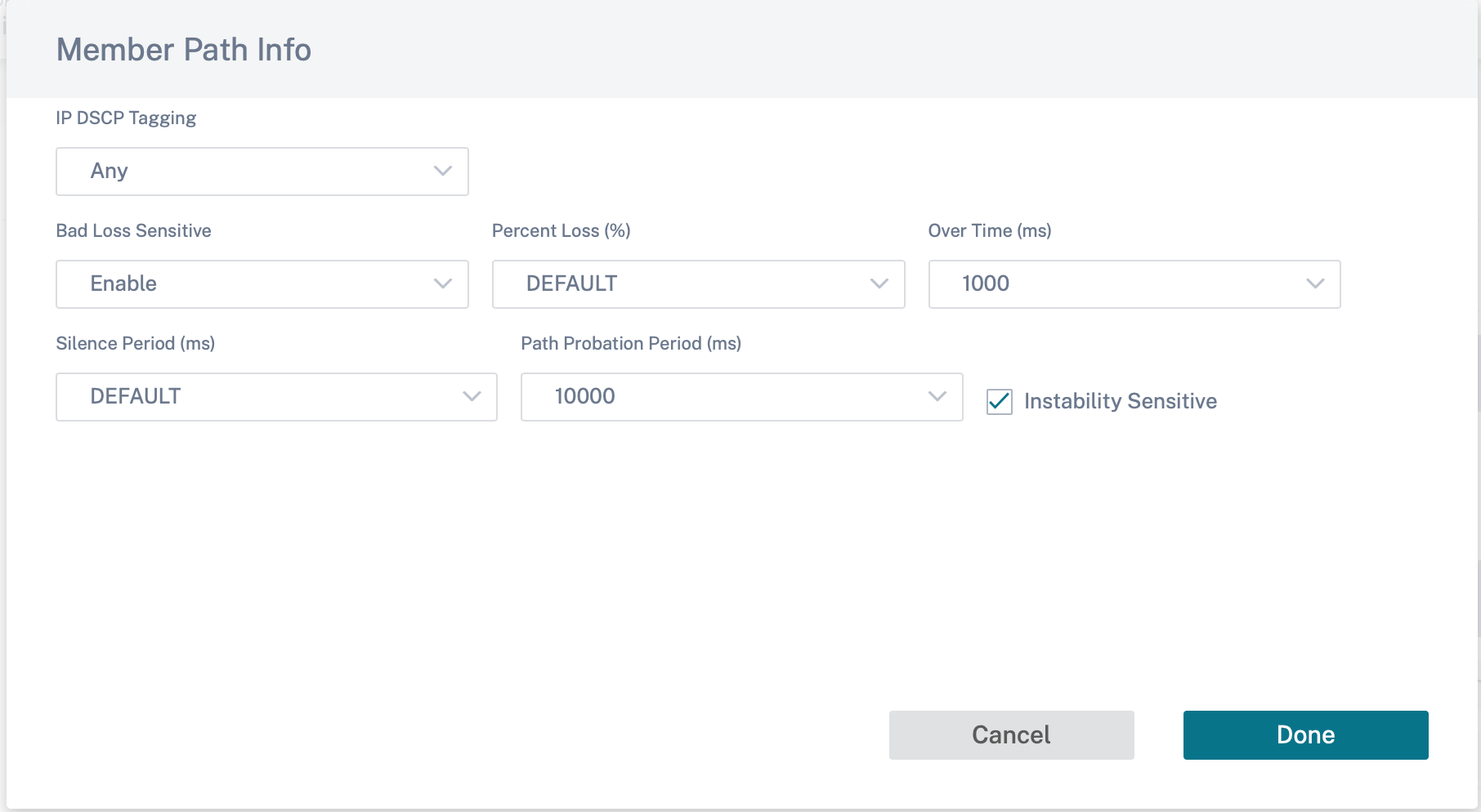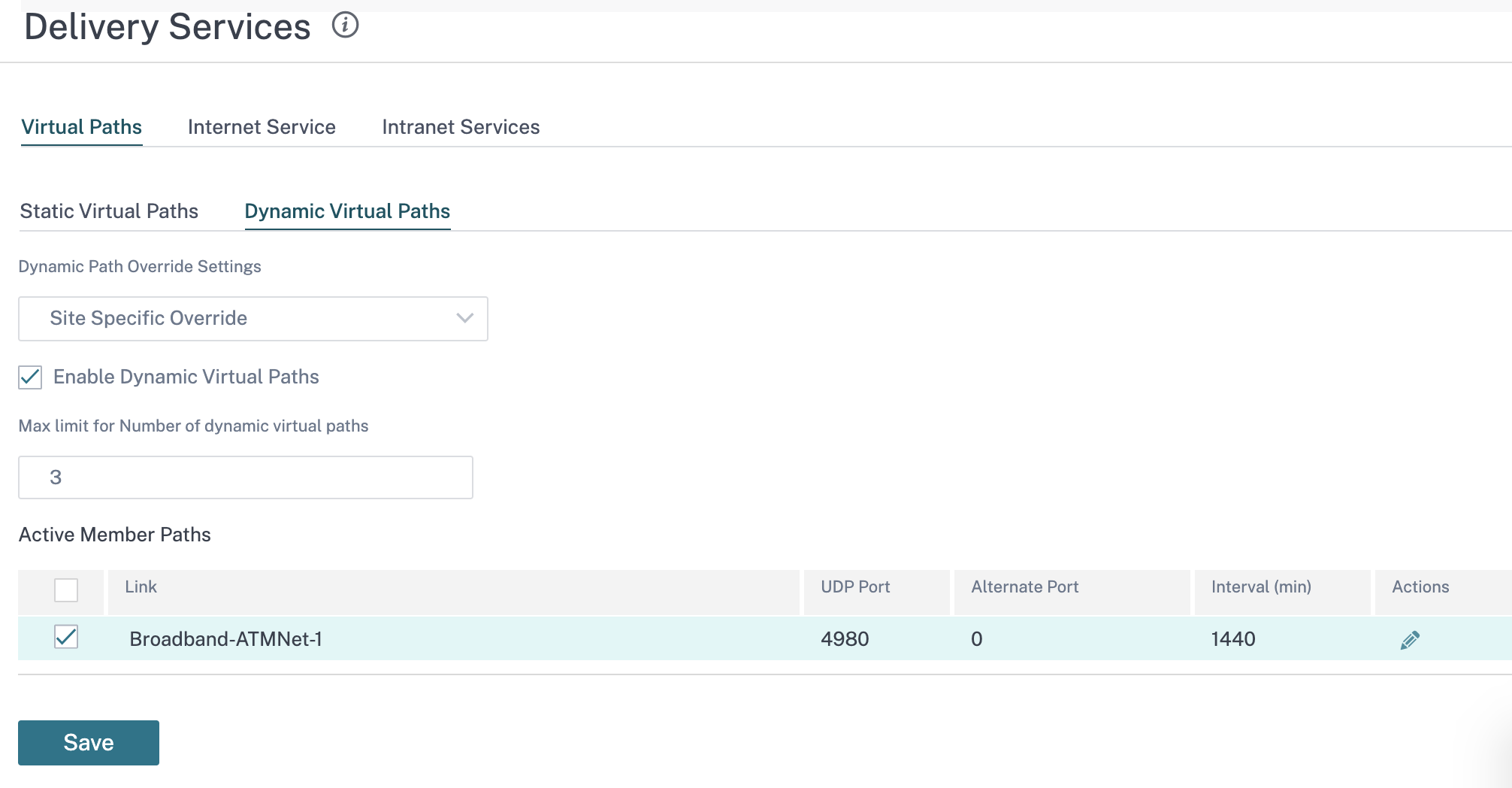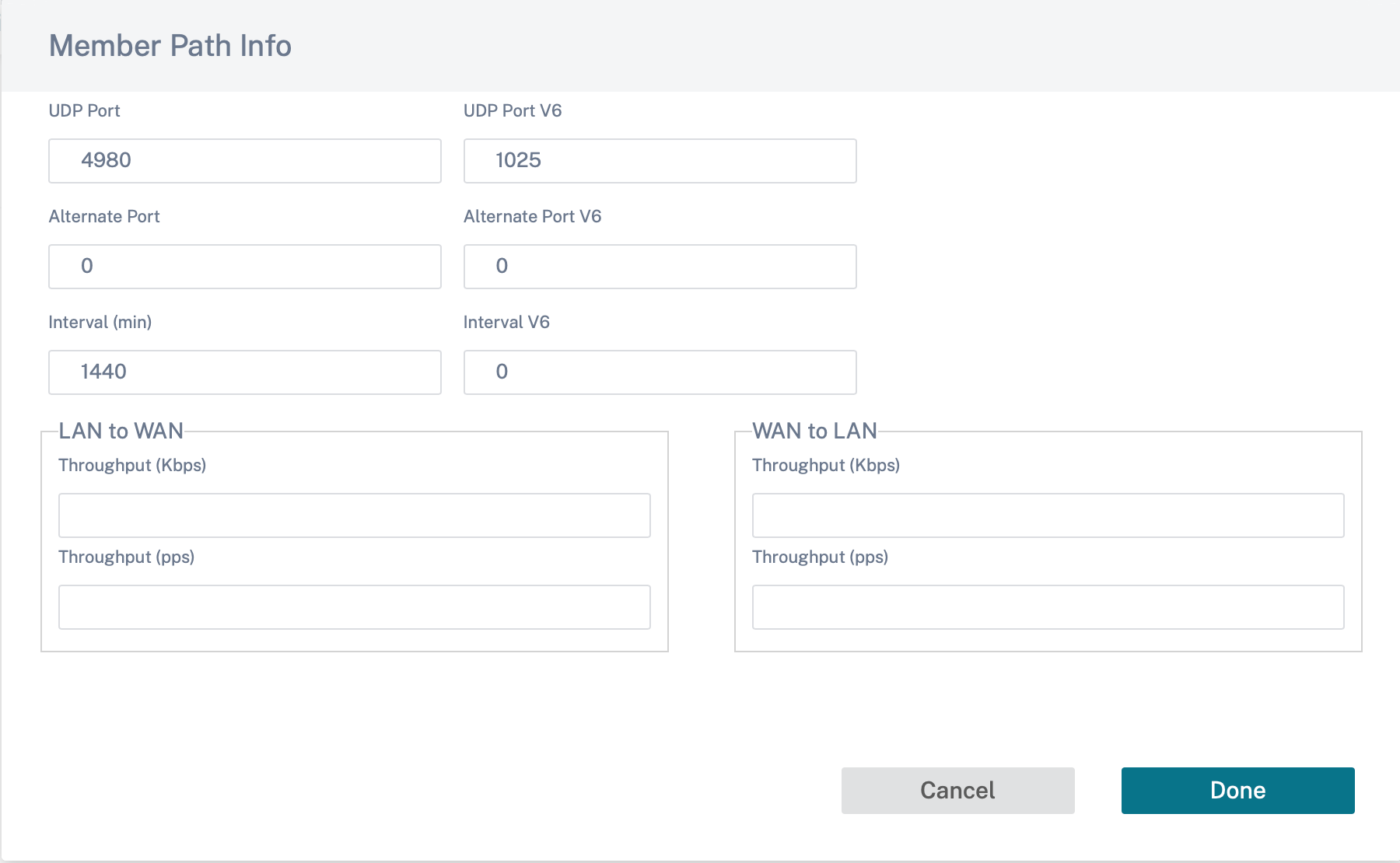Virtual paths
A virtual path is a logical link between two WAN links. It comprises of a collection of WAN paths combined to provide high service-level communication between two SD-WAN nodes. This is done by constantly measuring and adapting to changing application demand and WAN conditions. The SD-WAN appliances measure the network on a per-path basis. A virtual path can be static (always exists) or dynamic (exists only when traffic between two SD-WAN appliances reaches a configured threshold).
Static virtual paths
The virtual path settings are inherited from the global wan link auto-path settings. You can override these configurations and add or remove the member path. You can also filter the virtual paths based on the site and the applied QoS profile. Specify a tracking IP address for the WAN Link that can be pinged to determine the state of the WAN Link. You can also specify a reverse tracking IP for the reverse path that can be pinged to determine the state of the reverse path.
To configure static virtual paths, from the site level, navigate to Configuration > Advanced Settings > Virtual Paths > Static Virtual Paths.

The active member paths are listed in the Active Member Paths section, you can view or edit the member path settings.
- IP DSCP Tagging: A tag for the external IP header of the Virtual Path Control Protocol (VPCP) frame.
- Loss Sensitive: If enabled, a path might be marked as BAD due to loss and incurs a latency penalty in a path score. Set the percentage of loss over the time required to mark the path as BAD. Disable this option if loss of bandwidth is intolerable.
- Percent Loss: If packet loss exceeds the set percentage over the configured time, the GOOD Path state changes to BAD.
- Over Time: If packet loss exceeds the set percentage over this configured time, the path state is marked as BAD.
- Silence Period: The path state transitions from GOOD to BAD when no packets are received within the specified amount of time.
- Path Probation Period: The period to wait before changing the path state from BAD to GOOD.
-
Instability Sensitive: Latency penalties due to BAD state and other spikes in latency are considered.

The WAN link details for the selected active member paths are listed, you can change the settings as required. The UDP port settings can be configured for both IPv4 and IPv6.
- UDP Port: The port used for LAN to WAN and WAN to LAN packet transfer. You can also specify.
- Alternate Port: The alternate UDP Port to be used when UDP port switching is enabled.
- Port Switch Interval: The interval, in minutes, that the WAN Link alternates its UDP Port.
- Tunnel Header Size in Bytes: The size of the tunnel header, in bytes, if applicable.
- Active MTU Detect: The LAN to WAN paths for dynamic virtual paths is actively probed for MTU.
-
Enable UDP Hole Punching: The MCN assists UDP connectivity between compatible NAT-protected client sites.

Dynamic virtual paths
With demand for VoIP and video conferencing, the traffic between offices has increased. Setting up full mesh connections through data centers is time consuming and inefficient. With Citrix SD-WAN™, you can automatically create paths between offices on demand using the Dynamic Virtual Path feature. The session initially uses an existing fixed path. As the bandwidth and time threshold is met, a new path is created dynamically if that new path has better performance characteristics than the fixed path. The session traffic is transmitted through the new path resulting in efficient usage of resources. The dynamic virtual paths exist only when they are needed and reduce the amount of traffic transmitted to and from the data center.
To configure dynamic virtual paths, from the site level, navigate to Configuration > Advanced Settings > Virtual Paths > Dynamic Virtual Paths.
Select Override Global Defaults to override the virtual path settings inherited from the global wan link auto-path settings. Select Enable Dynamic Virtual Paths to allow dynamic virtual paths between this site and other sites connected through an intermediate node. Set the maximum allowable dynamic virtual paths for the site.

Set the UDP port and dynamic virtual path threshold. Specify the throughput threshold, in kbps or packets per second, on the intermediate site at which the dynamic virtual paths are triggered on LAN to WAN or WAN to LAN.
